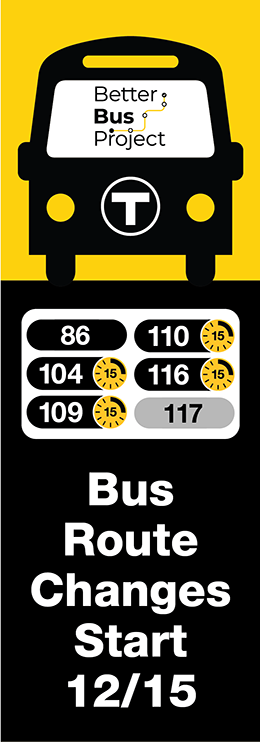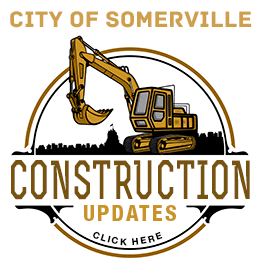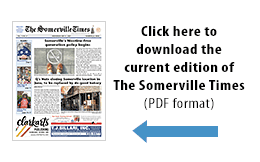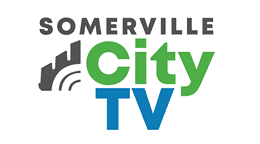By Joseph A. Curtatone
 (The opinions and views expressed in the commentaries of The Somerville News belong solely to the authors of those commentaries and do not reflect the views or opinions of The Somerville News, its staff or publishers.)
(The opinions and views expressed in the commentaries of The Somerville News belong solely to the authors of those commentaries and do not reflect the views or opinions of The Somerville News, its staff or publishers.)
Several local papers have already run stories about Somerville hiring a team of planning and engineering consultants to do a quick assessment of various development scenarios for the Inner Belt and Brickbottom districts. Under the umbrella of the non-profit Urban Ecology Institute, this team will examine the transportation, access, environmental and sustainability factors that must be addressed in any effort to realize the full development potential of these valuable areas in East Somerville.
There’s a real urgency to this study because the state’s Executive Office of Transportation recently expressed their interest in having some portion of these districts serve as home for a new Green Line maintenance facility. It’s not enough simply to say we don’t like that idea: after all, we strongly support the Green Line Extension through Somerville to Medford, and a maintenance facility is necessary somewhere on the line, even if Inner Belt or Brickbottom may be the wrong places to put it. We need to look at whether it can be made to fit without harming the rich potential of these areas to become new mixed-use urban neighborhoods where future generations of Somerville can live and work while enjoying the benefits of great transit service and easy access to downtown Boston and Logan Airport.
That’s why we need to develop our own understanding of how the state’s Green Line proposal might affect the overall development of Inner Belt and Brickbottom – development that might include a wide range of transit-oriented, Smart Growth elements such as housing, office and light industrial facilities. It may even include a potential soccer stadium. As they have said more than once in the past couple of years, the Kraft Group hasn’t decided whether or not to make a formal proposal for a new stadium in Somerville. But since they recognize that they – and more important, the people of Somerville – need to know more about what form of development best suits Inner Belt and Brickbottom, they’ve agreed to pay for most of the work.
Having potential developers pay for planning, analysis and environmental work – and doing so on our terms rather than theirs – is one of the several lessons we’ve learned from our successful development programs at Assembly Square and the MaxPak site. In both these cases, the City has made clear to interested developers that any project must fit within the outlines of a shared community vision of what is best for a particular development project.
It took our city a long time to figure out the pattern for success. At Assembly Square, we struggled to find a way to forge a shared vision, and to finance (largely through development covenants) the planning, analysis, legal and environmental work needed to make that vision a reality. We learned to negotiate major mitigation payments up front, so that the city would begin realizing return on investment right away. We also learned about the value of Smart Growth as a development framework, and the crucial role played by transit in creating a balanced, sustainable approach to growing our commercial tax base.
For years, we also struggled at Assembly Square to develop the right model for community review and discussion, and we finally turned to trusted intermediaries like former Secretary of Commonwealth Development Doug Foy, as well as Somerville resident and architectural expert Ann Tate, to develop shared principles for future development.
At the Maxpak site, we once again engaged in an extensive public review and discussion, and we asked the developer to undertake crucial planning and environmental work at his own expense so that we had the information we needed to shape the project to fit the neighborhood.
And, in addition to local activists and planners, we’ve regularly sought input and opinions from Somerville residents through public hearings and community meetings. Our residents are an important piece to the overall puzzle, and their continued support and input are valued and necessary to our planning.
All of these lessons are now paying off as we approach new Smart Growth development along the Green Line Extension corridor. At Inner Belt, at Brickbottom, and at Union Square, we will combine extensive community consultation with detailed planning and analysis before we settle on a development vision and look for a development partner. We will work with would-be development partners to understand that it is in their interests as well as ours to underwrite the city’s planning and environmental costs so that both they and we understand the consequences of their proposals and can adjust them to ensure that they fit our vision for Somerville’s future. We will draw on the expertise of Smart Growth advisors like Doug and Ann from the earliest stages of planning rather than bringing them in at the end.
No large-scale development will ever happen quickly or easily – and no large-scale development, whatever its benefits, will please everyone. But one of the reasons that Somerville remains an exciting and dynamic city is that our recent experience at Assembly Square and the MaxPak site has taught us how to draw on talents, knowledge and insight form many quarters – from political leaders like Governor Patrick, Congressman Capuano and our Board of Aldermen to local activists like Wig Zamore and Ellin Reisner – and from business leaders like Don Briggs at Federal Realty and Steve Smith at KSS Realty Partners to regional planning agencies like the Metropolitan Area Planning Council. Slowly but steadily, we’re learning to do this right.















Reader Comments